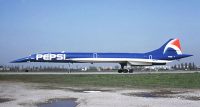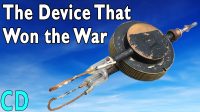Mention the name Rolls-Royce and probably the first thing you think of is the quintessentially British luxury cars, the brand that says “look at me, I’ve made it”, beloved by rappers, pop stars, entrepreneurs and royalty.
But the cars are only a small part of a much bigger business that helped change the world as we know it, so what else do Rolls-Royce do, other than making rather posh cars.
The Rolls-Royce that you see to today is quite a different business to how it started in 1906 with the collaboration of Henry Royce, a car builder and engineer and Charles Rolls, the owner of one of the first quality car dealerships.
Whilst Rolls-Royce started out making luxury cars, it soon entered the aero engine market during world war 1 because of the quality of their engineering, starting with a contract to make 50 radial engines under license from Renault.
Ironically Charles Rolls who was an early aviator was killed in an air accident in 1910, just four years after the companies’ formation and gained the unenvied title of being the first Briton to be killed in a powered aeroplane accident.
During the first world war, Henry Royce designed the companies first aero engine called the Eagle, based in part on an enlarged version of a Rolls-Royce Silver Ghost car engine.
After the war Rolls-Royce Eagle engines powered the first non-stop transatlantic flight by Alcock and Brown in 1919 and the first flight from England to Australia, which is a testament to their reliability even in those early days.
In the 1930’s the aero engine side of the business produced one of the most memorable engines ever to be made, the 27 litre Merlin V12. This was the last engine to be designed by remaining founder Henry Royce before his death in 1933.
The Merlin V12 went on to power some of the most iconic and effective fighters and bombers used by the allies in world war 2 including the Supermarine Spitfire, Hawker Hurricane, the Avro Lancaster and the North American P-51 Mustang, the engine of which was built in the US under license by Packard.
In all over 200,000 Merlin’s were produced and because of the engine’s performance and durability, they are credited with being one of the factors in providing victory for the Allies.
Before the end of the war, Rolls-Royce took the first Jet engine developed by Frank Whittle to produce the Rolls-Royce RB.23 Welland, Britons first production jet engine which was fitted to the Gloster Meteor in 1943.
Although the RB 23 was only a short lived engine, just 167 were built, it set the sights of Rolls-Royce firmly on Jet engine development and production.
In the following decades, through a series of company takeovers, Rolls-Royce ended up with the Olympus, the jet engine for the British Nuclear V-force, the most famous of which was the Vulcan Bomber. This in due course lead to the Rolls-Royce SNECMA Olympus 593 which powered the world’s only supersonic passenger plane, the Concorde.
In the late 1960’s Rolls-Royce developed the RB211, the world’s first 3 spool engine for the new generation of wide-bodied jets like the Lockheed Tristar. This would turn Rolls-Royce into a global leader in the aero engine business and provide the basis for the current generation of Trent engines.
However, problems in the development of the new engine forced the original Rolls-Royce company into administration, leading to it being nationalised by the British government. In 1973 it was split into two separate companies. Rolls-Royce Motors which made the cars and was ultimately sold to BMW in 1998 and Rolls-Royce Holdings PLC which continued making aero engines.
Rolls-Royce aero engines were not only used for planes but also for power generation as backup for nuclear Power Stations and filling in for peak demand for the UK’s national grid as well as offshore power for situations like oil rigs
Their engines are also found in ships and submarines. The Rolls-Royce MT30 gas turbine generators are used to power some of the most modern ships in navy’s around the world including the US Navy’s newest and largest Destroyer ever built, the USS Zumwalt.
This $3.5 Billion ship has an all-electric drive system powered by two 35.4 megawatt Rolls-Royce MT30’s along with two 3.8 megawatt Rolls-Royce RR4500 turbine generators. This total of 78MW of power is almost equal to that of a nuclear-powered aircraft carrier and can run the ship and the equivalent of a small town at the same time.
The Rolls-Royce MT30 uses a Trent 800 aero jet engine like those fitted to Boeing 777’s.
The Royal Navy’s latest super aircraft carriers the HMS Queen Elizabeth and HMS Prince of Wales due in 2017 and 2020 also use the dual Rolls-Royce MT30’s to power their 20MW electric drives.
The planes that will be used on the new Royal Navy carriers include the Lockheed Martin F-35 Lightning II. The Rolls-Royce LiftSystem allows the F-35 vertical take-off and thrust vectoring whilst being able to travel at supersonic speeds.
Rolls-Royce also make nuclear-pressurised water reactors for the Royal Navy’s Trident Nuclear missile submarines.
In keeping with the biggest US navy destroyer, Rolls-Royce makes the Trent 900 engines for the largest commercial aircraft in the world the Airbus A380.
These huge Rolls-Royce Trent XWB97 engines produce 97,000 lbs of thrust each at take off and have a fan diameter of just under 10 feet across.
These along with other world leading engines like the Trent 1000 for the Boeing 787 Dreamliner show just how far Rolls-Royce have from their original vision of Charles Rolls and Henry Royce to make quality cars back in 1906.






Comments
Hi,
This is nice article you shared great information i have read it thanks for giving such a wonderful Blog!!